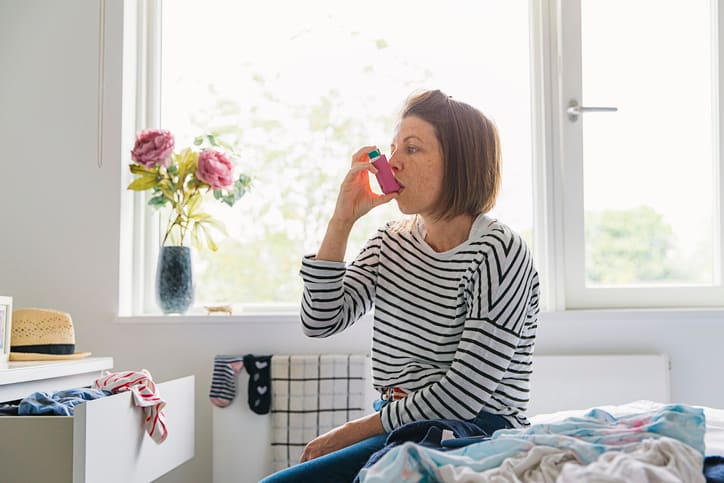Eco-anxiety is real and it’s impacting our children
[8 MIN READ]
In this article:
- Kids have an evolving nervous system, and it’s important for adults to help them cope with anxiety about the world.
- Making space to process the fears about the future of our planet can help everyone stay mentally grounded.
- Providence psychotherapist Horizon Greene offers some insights and tips for how to productively cope with eco-anxiety.
We’re living in a time of great opportunity as well as challenges, and our kids are watching.
More than any previous generation, today’s youth are exposed to all the good and the bad in the world and it’s on us – the adults – to help them navigate the times. Ours is not a job of overriding the real feelings of fear and anxiety that kids face today, but one focused on empowering kids to stay grounded when stressors come into their lives. Therein lies our opportunity.
Innumerable scientific studies have proven the long-term mental health benefits of raising children in a loving and nurturing environment. The bonds established in infancy, in many ways, determine the emotional and psychological resiliency throughout life. During the early bonding period, kids become interconnected to their parents’ or caregivers’ nervous systems. This interconnectedness with a seasoned nervous system can enhance brain development even into early adulthood.
“Kids’ nervous systems are still learning how to scan for safety, so developmentally they need to borrow a grounded nervous system [from their parents or guardians] to help them process things that feel scary or make them feel unsafe,” said Horizon Greene, a Psychotherapist at Swedish Medical Group in Seattle, Washington. “Adults need to share with kids what we have learned in our own bodies about resiliency and strategies to cope with change.”
While stressors can crop up from a wide array of environmental factors, one of the most concerning stressors is the growing existential and physical threat of climate change. Anxiety relating to the climate crisis does not discriminate by any demographic marker, including age. Kids can also get stuck in the eco-anxiety malaise.
What is eco-anxiety?
Eco-anxiety is a term gaining some momentum in the American psyche as the realities of climate change increasingly come to fruition. Glenn Albrecht, an environmental philosopher and retired professor of sustainability in Australia, referred to eco-anxiety as:
“The existential pain experienced when the place where one resides is subject to environmental degradation.” (source)
At its core, eco-anxiety is a state of emotional and mental distress brought on by drastic, negative changes to the environment caused by the warming of the climate. These changes are most often observed by extreme weather events such as floods, hurricanes, extinction of wildlife species, earthquakes or heat waves.
These shifts in weather patterns carry with them global health issues that disproportionately impact historically disadvantaged communities (e.g. lower income communities) and the elderly.
Changes to our climate and the associated health issues are happening in plain sight, and our kids are watching.
How the human nervous system works
Humans are born with the innate ability to understand danger…a built-in survival mechanism that responds to environmental or psychological triggers.
The autonomic nervous system, in tandem with neurotransmitters from the brain, control all bodily functions such as breathing, heartbeat and oxygen flowing throughout our bodies. This complex system has two core components:
- The sympathetic nervous system acts as a gas pedal that dictates our decision to fight or flee a given situation, such as getting out of the way of an oncoming train.
- Our ability to regain composure is driven by the parasympathetic nervous system, which is like a brake that tells the body to calm down after the passage of a stressful encounter.
As a 2020 Harvard Health article pointed out, this interplay between the nervous system and the control center in our brains activates glands to send different hormonal responses depending on the situation.
If danger is present, our bodies are flooded with epinephrine (a.k.a. adrenaline), creating a variety of physiological responses such as increased heart rate, improved oxygen flow and heightened awareness.
During this elevated state of alertness, cortisol, the primary stress hormone, releases sugars into the bloodstream to keep the sympathetic nervous system engaged – keeps the gas pedal pressed to the floor.
Once the danger has passed cortisol levels return to balance and the parasympathetic nervous system kicks in to calm the body.
So, how does this relate to protecting kids from stress and anxiety relating to the climate crisis?
The importance of a flexible nervous system
Many kids are carefree and hopeful about the future, but all kids are keen observers of those in their environments. How we – parents, guardians, teachers and caregivers – show up are inputs to how kids approach the world. When we bring negative energy in the form of anxiousness into an environment, those around us, especially kids, feel it too.
Anxiety is a natural human response, and our nervous systems are designed to prepare us for survival. When trained to be flexible, our complex web of neurotransmitters can adapt to pretty much any environmental cue – positive or negative. Neurological flexibility training requires reflective listening and a healthy dose of curiosity.
Reflective listening means giving kids space to talk about their inner worlds while adults listen and ask engaging questions. When kids are experiencing anxiety, approaching the situation with a genuine sense of compassion and curiosity presents a “safer space” for them to be vulnerable and candidly express what they are feeling.
As Greene explains, “When we override the natural wisdom of our nervous system, we miss an opportunity to help kids respond more resiliently to stressors. Reflective listening is a great tool to connect with kids, and humans in general, and to remind each other we are not alone.”
Fostering flexible nervous systems in kids is especially important to help them develop the tools to navigate the uncertainties of life, including the climate crisis and the growing prevalence of dangerous climate-driven weather events such as wildfires and floods.
According to Greene, “We don’t want to tell kids not to feel what they are feeling. We want them to realize that they have flexibility in how they respond to all of life’s challenges; we need to help them create space to process what’s happening at any moment in life.”
Our nervous systems are meant to help us, but we are collectively facing a new challenge with eco-anxiety.
Eco-anxiety and children
While most younger kids don’t fully understand the gravity of the global climate crisis, they are also susceptible to the accompanying health impacts, specifically those of the mental variety.
As mentors for future generations, adults have an opportunity to step up and equip today’s youth with the knowledge and tools to be advocates for the structural changes needed to effectively address the growing climate crisis.
“Kids are truth tellers, and they are natural visionaries,” stated Greene. “Adults have an opportunity to help kids know that they are not alone, that we are all custodians of the earth.”
Embracing the reality that change needs to happen to save our planet is heavy and stressful, especially amid other social issues currently occupying our minds. Emotions of fear, anxiety, anger and helplessness are natural given the knowledge we have about climate change. As innocent and hopeful observers of the human condition, kids need hope and it’s our job to provide it.
Greene added, “We need to show them congruency by mapping our words and feelings to our actions in a realistic and simple way. When we pressure kids to dismiss or override the wisdom of their anxiousness, we are telling them what they are feeling isn’t valid or important. And that doesn’t help them feel included in the fight for change…its more effective to help kids feel their feelings and figure out together what a resilient, flexible nervous system response would be.”
Some helpful tips for parents and guardians
Let’s be clear -- there’s no silver bullet to navigating the climate change quandary and it’s not going to be easy to help kids truly understand the gravity of the situation, but there are productive ways we can help future generations affect change.
Below are six tips we gathered from Providence experts that can not only help kids learn about the climate crisis but can also strengthen your relationship with tomorrow’s leaders:
- Be realistic: Most kids understand more than we give them credit for. It’s important to be truthful about our climate challenges. Give them age-appropriate facts. Here’s a popular YouTube video designed for kids by Bill Gates.
- Be compassionate: The last thing we want to do is give kids something else to worry about – they already have had to deal with COVID! Help them create space to process feelings (positive or negative) about big social issues.
- Be a teacher: Look for opportunities to share useful/simple nuggets to increase their knowledge of the issues and causes relating to the climate crisis, including health, social justice and equality for all people.
- Be a listener: Get curious and practice reflective listening. Ask them questions such as “tell me more about what you’re feeling,” and truly engage them in a conversation so they feel heard.
- Be an advocate: Find kid-friendly local events to get them involved in the collective movement to address the climate crisis.
- Be one with nature: There’s mounting evidence that getting outdoors (e.g., going for a hike or a walk in the woods) is good for emotional, physical and mental well-being.
Eco-anxiety is real and it’s heavy. But it’s not all dire. We, with the help from our children, can still bring the change that is required to ensure the livelihood of our mother Earth. It truly is in our hands to define the type of future we want for ourselves and our kids.
“We have an opportunity to learn from the strength of children while also recognizing the preciousness of their developing nervous systems. And, as they develop, we can work in partnership with them to be the earth stewards of the future,” said Greene in closing.
Learn more about Providence’s sustainability efforts.
You can also read more about how climate change impacts your health, the commitment Providence made to be carbon negative by 2030 and why the climate crisis is a public health emergency.
--
Find a doctor
Providence caregivers work to improve our planet and can improve your health. You can find a Providence provider in your area by searching in our online provider directory.
Providence in your inbox
Subscribe to our newsletter to get more educational and inspirational stories from the expert caregivers at Providence.
Related resources
Our climate crisis is a public health emergency
Earth day can’t wait: We need to act now on climate change
How climate change impacts your health
Providence's Climate Action Plan
Climate change and health: Caring for our patients and the Earth




